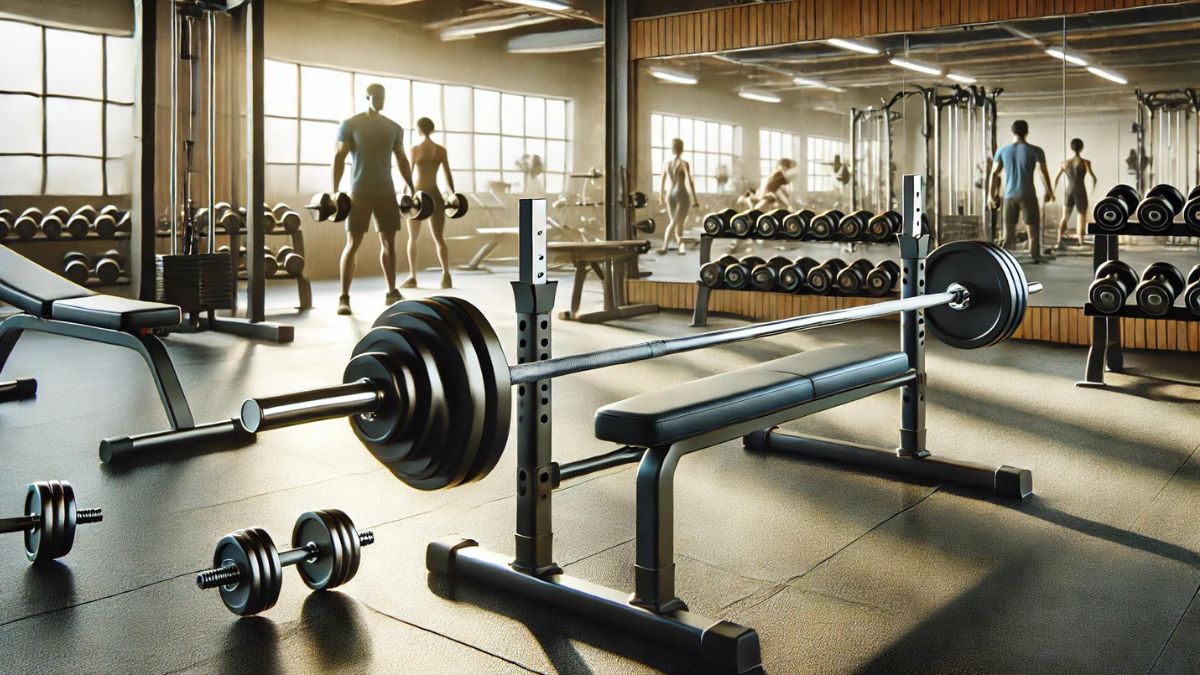T Bars are gaining traction in the fitness world, and for good reason. These versatile pieces of equipment can elevate your strength training game to new heights. Whether you’re a gym newbie or a seasoned lifter, these Bars offer unique benefits that cater to all fitness levels.
Imagine maximizing your workout efficiency while targeting multiple muscle groups at once. Sounds appealing, right? With their innovative design, T Bars allow you to perform various exercises that challenge both your upper and lower body. If you’ve been searching for a way to break through plateaus or simply spice up your routine, look no further than a T Bar.
In this guide, we will explore everything from the history of T Bars to the best exercises you can incorporate into your regimen. So grab your weights and get ready to discover why these unsung heroes deserve a spot in your workout arsenal!
History and Evolution of T Bars
T Bars have an intriguing history rooted in the evolution of strength training. Originally designed as a simple tool for weightlifting, their design has transformed significantly over the decades.
In the early days, T Bars were often rudimentary and lacked the ergonomic designs we see today. Athletes used them primarily for basic movements, focusing on building overall strength.
As fitness culture grew in popularity during the mid-20th century, so did innovations surrounding T Bars. The introduction of different grips and adjustable weights allowed users to target specific muscle groups more effectively.
By the late 1990s, manufacturers began incorporating advanced materials and designs into T Bar construction. This made them not only more durable but also safer for diverse workout routines.
Today’s T Bars come with various attachments and enhancements that cater to both casual gym-goers and serious athletes alike. Their progress reflects a broader trend toward specialized equipment in personal fitness regimes.
Types of T Bars
T Bars come in various styles, each designed to target specific muscle groups and enhance your workout routine. The most common type is the traditional T Bar row, which focuses on building back strength.
Another popular variant is the T Bar squat. This setup allows for a more stable base when performing squats, engaging not just your legs but also your core effectively.
For those looking for versatility, adjustable T Bars are a fantastic option. These can be modified to accommodate different exercises like lunges or overhead presses.
There are also Olympic-style T Bars that enable heavier lifting with added stability. They’re perfect for advanced lifters aiming to push their limits.
Each type of T Bar offers unique benefits and challenges, making it essential to choose one that aligns with your fitness goals. Explore these options to find what fits best into your training regimen.
Benefits of using T Bars in Strength Training
T Bars are a fantastic addition to any strength training routine. They offer a unique way to target multiple muscle groups effectively. This versatility allows for varied workouts that keep things fresh.
One significant advantage of T Bars is their ability to promote proper form. The design encourages users to maintain an upright posture, reducing the risk of injury. This makes them suitable for both beginners and seasoned lifters alike.
Another key benefit is the emphasis on compound movements. Exercises with T Bars engage large muscle groups, offering more bang for your buck in terms of calorie burn and strength gains.
Using T Bars can enhance grip strength over time. As you work through different exercises, you’ll notice improvements not just in your arms but also in overall performance across various lifts.
Tips for Using T Bars Safely and Effectively
Using T Bars can elevate your strength training game, but safety is crucial. Always start with a proper warm-up to prepare your muscles and joints for the workout ahead.
Ensure you have the right form. Keep your back straight and engage your core throughout each movement. This will help avoid injury and maximize effectiveness.
Choose an appropriate weight that challenges you without compromising technique. Gradually increase the load as you build strength.
Focus on controlled movements rather than rushing through reps. Quality over quantity goes a long way in achieving results while preventing strain.
Don’t hesitate to ask for assistance if you’re unsure about any aspect of using T Bars. A knowledgeable partner or trainer can provide guidance that enhances your experience and keeps things safe.
Top 5 T Bar Exercises for a Full-Body Workout
T Bar rows are a classic. They target your back, enhancing strength and posture. Stand with feet shoulder-width apart, bend slightly at the knees, and pull the handle towards your waist.
Deadlifts with T Bars offer an excellent way to engage multiple muscle groups. Start with a neutral spine, grip the handles securely, and lift using your legs while keeping your core tight.
For those wanting to challenge their stability, try T Bar lunges. Hold the bar in one hand while stepping forward into a lunge position. This move works both legs intensely.
Chest presses can also be performed with T Bars for upper body gains. Lie on a bench or floor, gripping the bar above you and pressing upwards smoothly.
Incorporate rotational twists by holding the T Bar close to your chest as you pivot side to side. This exercise engages your core effectively while improving overall balance.
How to Incorporate T Bars into your Fitness Routine
Incorporating T Bars into your fitness routine can elevate your strength training game. Start by assessing your current workout plan. Identify areas where you need to build muscle or enhance stability.
Begin with two or three sessions per week focused on T Bar exercises. This will help you gradually adapt without overwhelming yourself. Alternate between upper and lower body workouts to keep things balanced.
Consider pairing T Bar movements with complementary exercises like squats or deadlifts. This combination maximizes efficiency while targeting multiple muscle groups.
As you progress, increase the weight incrementally for continued growth and challenge. Pay attention to form; quality over quantity always prevails in strength training.
Don’t hesitate to mix it up! Varying angles and grips keeps workouts fresh and engaging, preventing plateaus in your progress.
Conclusion
T Bars have carved out a unique niche in the fitness world. Their versatility and effectiveness make them appealing to both beginners and seasoned athletes alike.
Incorporating them into your routine can lead to noticeable strength gains. They target multiple muscle groups, enhancing overall performance.
The journey with T Bars is just beginning for many. As you explore different exercises and techniques, you’ll uncover new challenges and rewards along the way.
Whether you’re aiming for hypertrophy or functional strength, these tools can adapt to your goals. It’s all about finding what works best for you and maintaining consistency in your training regimen.
Embrace the challenge that T Bars offer, dive into their diverse applications, and watch how they elevate your fitness game!
FAQs
What are T Bars and how do they work?
T Bars, also known as T-Bar row machines, are versatile pieces of gym equipment designed for strength training. They feature a barbell attached to a pivot point that allows users to perform rows effectively. This movement targets various muscle groups, especially the back.
Are they suitable for beginners?
Absolutely! The Bars can be adjusted according to weight and resistance levels. Beginners should start with lighter weights to master their form before progressing.
How often should I incorporate T Bar exercises into my routine?
Frequency depends on your fitness goals. For general strength training, aim for 1-2 times per week in conjunction with other workouts targeting different areas.
Can I use a regular barbell instead of a dedicated T Bar machine?
Yes! If you don’t have access to a specific T Bar machine, you can mimic the movements using a regular barbell by anchoring one end against something sturdy while pulling the other end toward your body.
What muscles do T Bars target?
T Bar exercises primarily engage the upper and lower back muscles but also recruit biceps, shoulders, and core stability throughout the movements.
Are there any risks associated with using T Bars?
Like any exercise equipment, improper usage can lead to injury. It’s crucial always to maintain proper form and control during lifting. Start slow and progressively increase weights as you become more comfortable.
Can I include cardio along with my T Bar workouts?
Definitely! Mixing cardio routines like running or cycling with strength training enhances overall fitness levels. Just ensure you’re allowing adequate recovery time between sessions focusing on different muscle groups.




